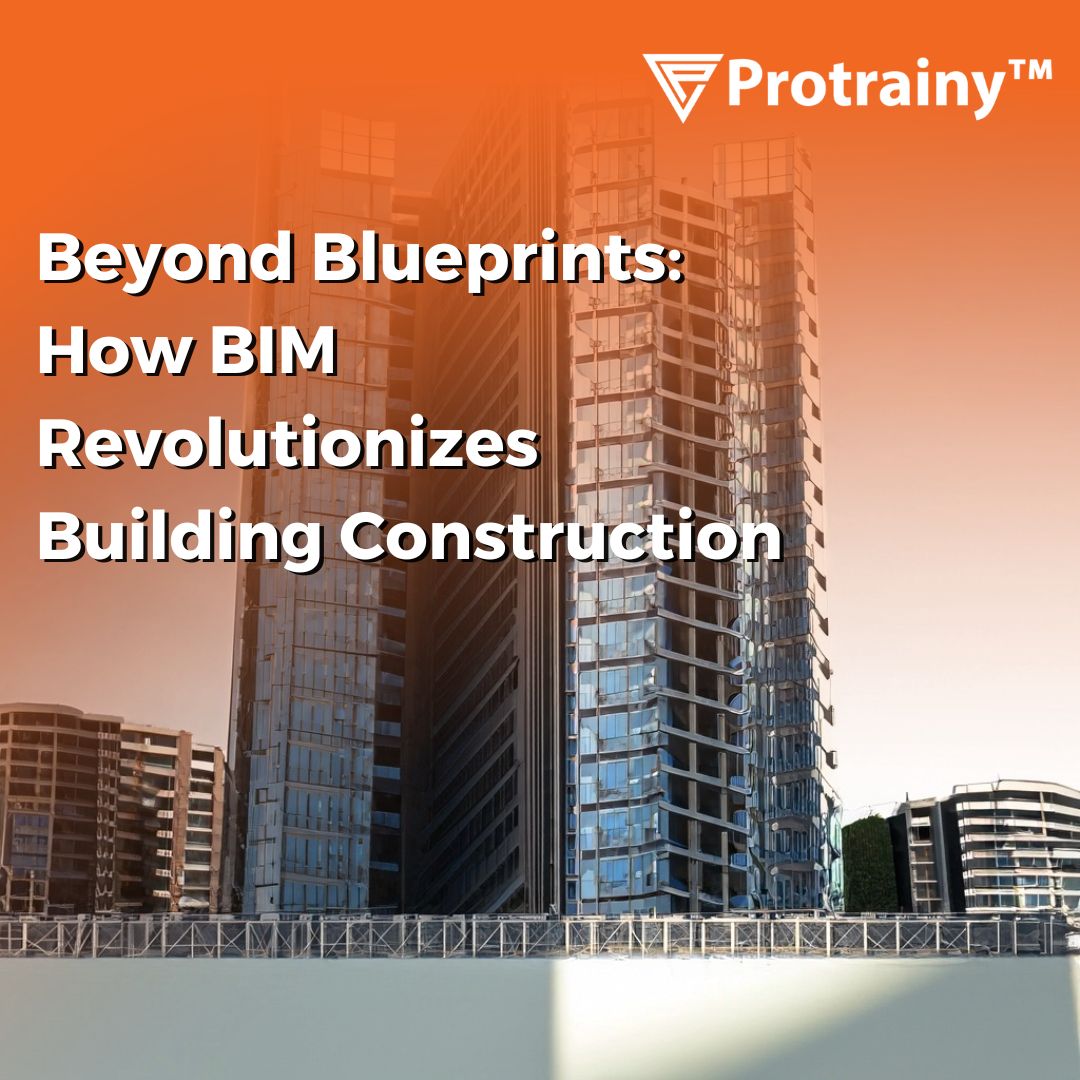Blogs
- Home
- Blogs
Beyond Blueprints: How BIM Revolutionizes Building Construction
Protrainy | Aug. 25, 2023, 10:11 a.m.

In the ever-evolving landscape of construction, a groundbreaking digital transformation is taking place – it's called Building Information Modeling (BIM). No longer confined to traditional blueprints, BIM harnesses the power of technology to reshape how we conceptualize, plan, and construct buildings. From architects to contractors, every stakeholder benefits from the revolution BIM brings to the construction phase.
Enhanced Communication and Collaboration:
BIM acts as a universal language spoken by architects, engineers, contractors, and owners. This shared digital space fosters seamless collaboration, enabling real-time adjustments and discussions that nip problems in the bud. The result? Fewer hiccups, delays, and unforeseen costs.
Informed Decision-Making:
Imagine testing out different design elements virtually before a single brick is laid. BIM makes it possible. By simulating a building's behavior under various conditions, owners and designers gain valuable insights to make informed decisions about materials, systems, and layout.
Cutting Waste, Reducing Rework:
Precision is paramount in construction. BIM's accurate quantity estimates and material lists streamline procurement, reducing wastage and the need for costly rework. It's like having a crystal ball for predicting resource requirements.
A Safer Environment:
Safety is non-negotiable in construction. BIM's ability to identify potential hazards in the design phase enhances on-site safety. It's a preemptive measure that ensures workers are protected and risks are minimized.
Pioneering Sustainability:
As the world moves towards sustainable living, BIM is leading the charge in construction. By optimizing energy usage, water consumption, and even materials, BIM models can be tailored for maximum eco-friendliness.
Increased Productivity Through Automation:
The construction industry, notorious for its complexity, can greatly benefit from automation. BIM's ability to generate schedules, estimates, and material lists not only reduces the burden of manual tasks but also ensures accuracy in planning.
Visualization That Inspires Confidence:
Traditional blueprints can be hard to decipher for non-experts. BIM's realistic visualizations paint a vivid picture of the end product, making it easier for owners and stakeholders to understand the design. This clarity leads to fewer changes and smoother execution.
Meticulous Documentation:
From day one of construction to long after the final brick is laid, BIM continues to serve. It creates a comprehensive documentation repository that can aid in maintenance, renovations, and future modifications.
BIM's rise is inevitable, transforming construction from a trade-reliant on static plans to a dynamic and adaptable process. Its ability to streamline communication, mitigate risks, and foster sustainable practices makes it a game-changer that elevates the entire construction experience. As we stand at the crossroads of technology and construction, embracing BIM isn't just a choice – it's the blueprint for a better, smarter future in building construction.
